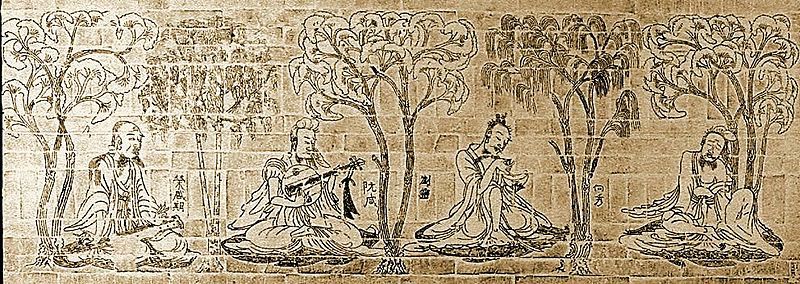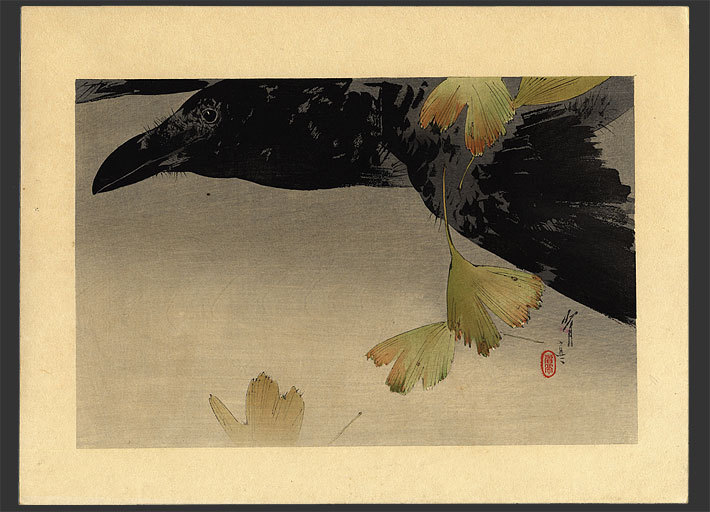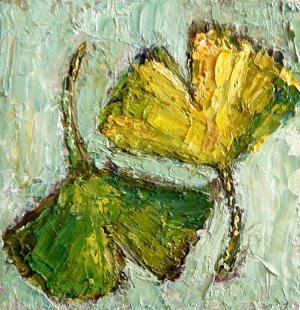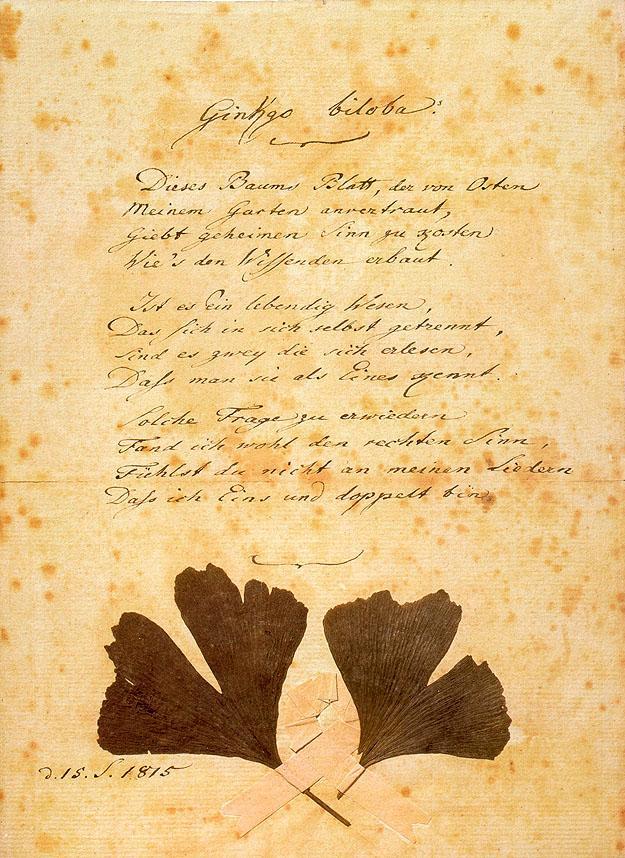Ginkgo : A Symbol in Art and Literature Throughout the Ages
The ginkgo leaf and tree symbolizes many diverse and unique religious and cultural values going back to ancient times. It makes sense that the beautiful fan-shaped, delicate leaf of the ginkgo has presented itself as a popular motif in art throughout the last 20 centuries. The ginkgo leaf has been used extensively in Asian art but it is also valued around the world. Most notably the ginkgo has been used as a symbol of peace, hope and vitality and also as a symbol of love and duality.
A Symbol of Peace, Hope and Vitality
For centuries the ginkgo tree and leaves have been seen as a symbol of peace and hope, aiding to its continued presence throughout human history. During the late 5th century A.D, a famous mural known as the Seven Worthies of the Bamboo Grove and Rong Qiqi was crafted on a sacred Chinese tomb. This mural has clear illustrations of ginkgo trees next to the graphics of the seven sages of the bamboo grove. These seven sages were said to be a scholarly clan that came together during the Edo period, a period of intense political instability in China. These sages represented a movement towards freedom and peace. It is clear that in this mural the ginkgo trees in the background are an additional symbol of peace and hope.
Another powerful example of the importance of the ginkgo tree as a symbol for hope, is the survival of the gingko tree, known as the “bearer of hope” that survived the bombing in Hiroshima. This tree is regarded as a symbol of hope, and prayers for peace and healthfulness have been engraved into its bark. Likewise, in a beautiful woodblock print called Crow in Flight, produced by the Japanese artist Watanabe Seitei in 1916, the ginkgo is also seen as a symbol of peace. In Asiatic mythology, the crow is seen as a divine messenger. This beautiful illustration of a crow with gingko leaves falling in front of it could be interpreted as a peaceful negotiation with the gods; the crow representing the messenger and the ginkgo leaves representing peaceful conciliation.
A Symbol of Duality and Love
The gingko tree has also represented the theme of duality in various cultures throughout history, which stems from its unique botanical form. Ginkgo trees are dioecious, meaning that each ginkgo tree has either male or female sexual organs. Additionally, the ginkgo’s leaves often appear to have two lobes that are split halfway down the middle. This “duality” of the tree is expressed in many works of art and literature.
Li Shizhen, one of the greatest Chinese herbalists of all time, relates the ginkgo to the idea of yin and yang. In her legendary book, Compendium of Materia Medica published in 1593, she remarks on the dynamics between men and women, stating “If one drills a hole into the side of a female ginkgo and inserts a branch from a male ginkgo, the tree will also generate seeds-does this not illustrate the marvelous workings that result from the attraction of yin and yang?” (Fruehauf, 1998). Additionally, various artists have artistically illustrated the interplay between yin and yang and the ginkgo tree. In 2005, artists “Gilbert and George” created a work known as the Ginkgo Pictures. In this work, the artists use the ginkgo to symbolize their partnership and the ups and downs of life (see top image).
In 1815 Goethe wrote a beautiful poem about the ginkgo using the leaf as a symbol of his love affair. Goethe compares his love for Marienne Von Willemer to the two lobes of the leaf. He explains poetically that just as one does not know whether the ginkgo leaf is one or two leaves, he does not know whether he and his lover are two or one selves. Similarly, in a poem called Simile: Willow and Ginkgo written by Eve Merriam in 1930, the ginkgo tree is again used a tool to express her romantic emotions. In her poem she compares the willow tree and the ginkgo tree, obviously favoring the beauty of the willow tree however falling in love with the unusual nature of the ginkgo tree. She explains the duality of her love affair with the ginkgo tree: “the ginkgo is leathery as an old bull…like a city child, it grows up in the street….but my heart goes to the ginkgo” (Merriam, 1930).





